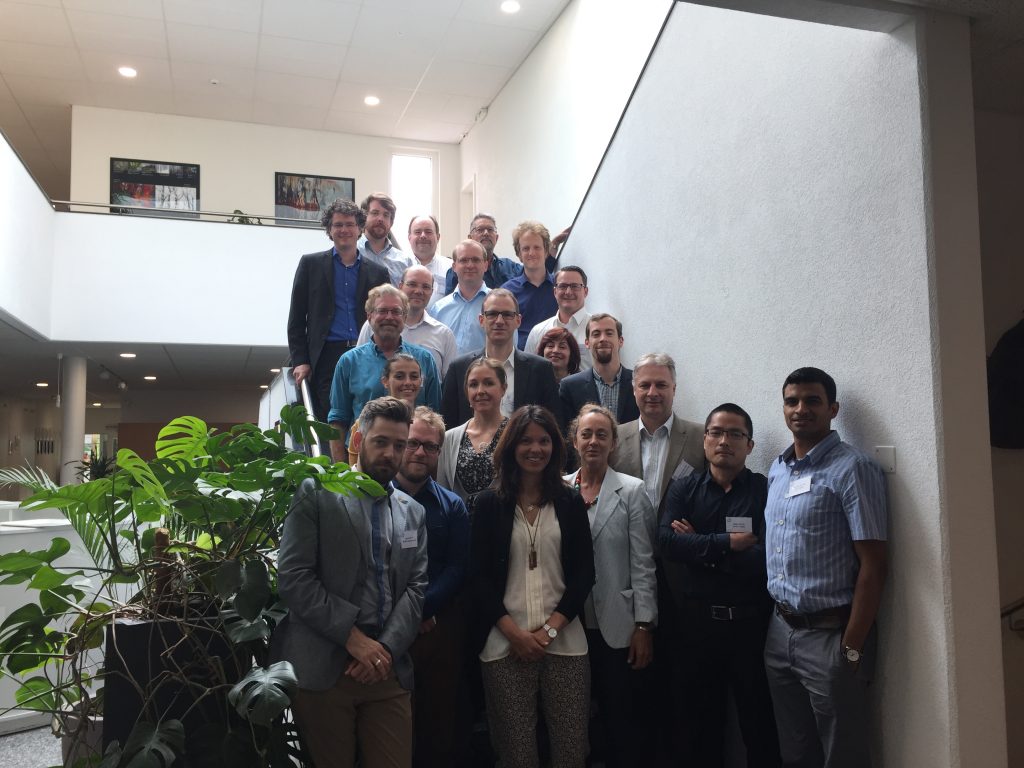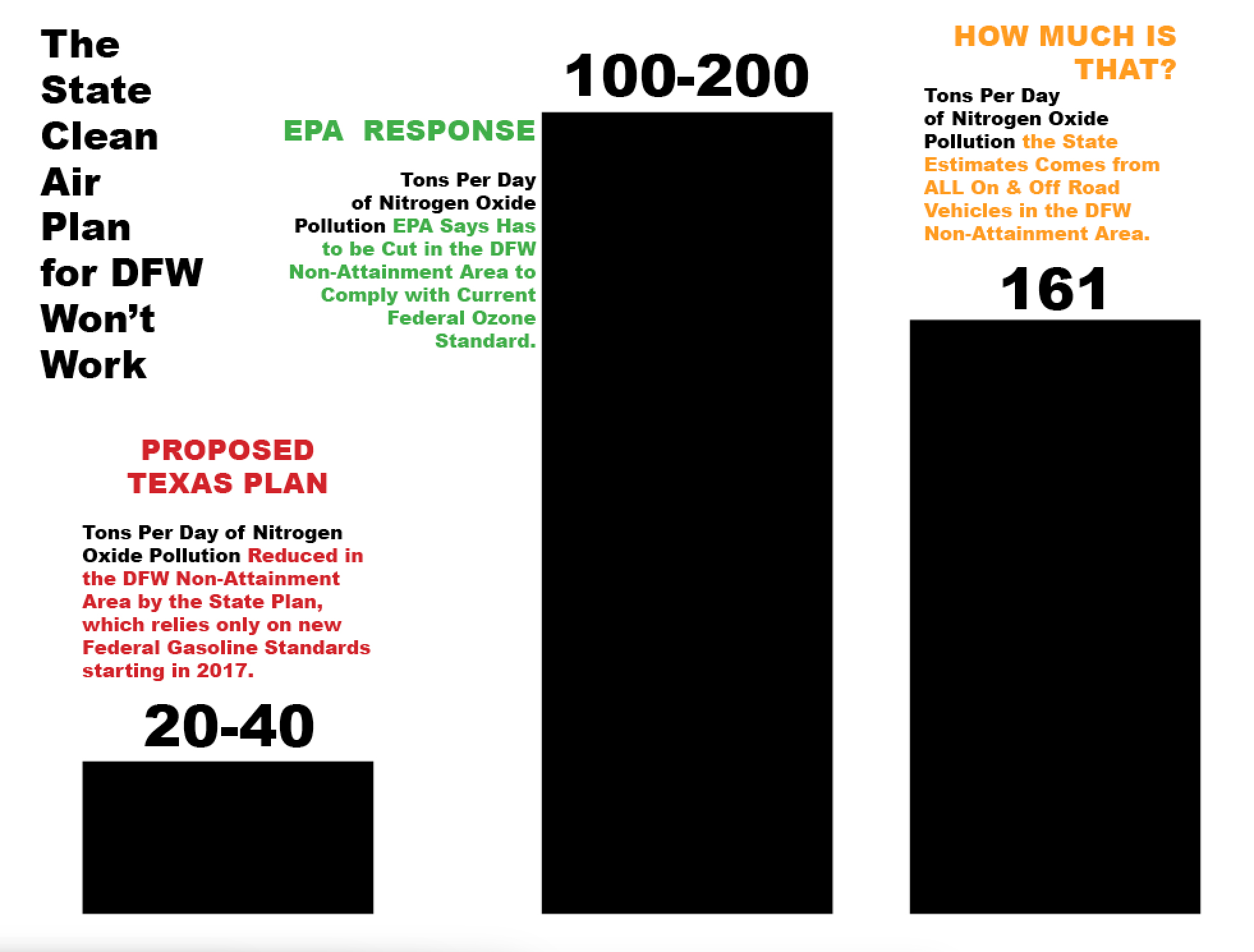Cement
Downwind in Switzerland: “Do you carry responsibly-sourced concrete?”
(Half of these people represent industry. Half are environmentalists. Can't tell which ones? That's a good thing.)
Should a bag of concrete be like an organic banana or a new chair made out of recycled wood and get "certified" as being responsibly-sourced, or "sustainable?" And if so, what's the criteria for making such a judgment, and who's making it?
Those are the complicated questions at the heart of a new worldwide initiative by the concrete/cement industry to come up with a way to sell its products in a more environmentally-friendly way.
After a couple of years of working on a scoring scheme, the mostly European-based intra-company group (LaFarge/Holcim, Heidelburg, CEMEX) charged with designing the system was ready to unveil it to the international environmental community for the first time in mid-July at a small meeting in Gland, Switzerland, headquarters of the International Union for the Conservation of Nature, whose staff facilitated the review process. IUCN had performed the same function for the aluminum industry when it went through a similar "green" self-examination.
Nine different environmental groups from at least seven different countries (Britain, Bulgaria, China, India, Lebanon, Switzerland) spent three days assessing and critiquing the industry's proposal – including the lone representative from the U.S., Downwinders at Risk's Jim Schermbeck. Participants not only met during the day, but ate together, and stayed in the same lone hotel in the small, outlying suburb of Geneva. Inside the meeting room, discussions were often frank, funny, and awkward. Outside, conversations ran the gamut, from architecture, to vacation trips, to Texas BBQ.
It's not a surprise that the concrete/cement business wants its relatively messy business to be seen through green-tinted glasses. Old timers will recall the burning of hazardous waste in Midlothian cement plants was relabeled "recycling" in the 1980's and 90's.
But this time around, the pressure is not necessarily to greenwash the transformation of a cement kiln into a waste incinerator, but to give an environmental patina to the final product, concrete, so that it can compete in the marketplace with building materials that already have their own green certification schemes up and running.
In other words, there appears to be new market pressure on the industry to "go green." Wood and Aluminum all now have their own systems for doing so. Concrete/Cement is lagging behind because it can't point to such a system. They want everyone from a construction site manager to a do-it-yourselfer to ask for "certified concrete" in the same way customers want wood that wasn't cut from a rainforest habitat, and aluminum made with Bauxite that wasn't mined at the expense of indigenous peoples.
Congratulations. Consumer demand for green products is so great that even the conservative cement/concrete industry feels the need to respond.
But that's also not news to North Texans. Certainly one reason Downwinders had a seat at the table in Switzerland was our pioneering Green Cement campaign of 2006-2011 which used government procurement policies to reward less polluting Midlothian cement kilns and punish the dirtier plants. That was the first time the marketplace for cement had been used toward greener ends in the US.
While that local effort looked exclusively at the differences in air pollution impacts from the Midlothian cement kilns, this new initiative starts at the limestone quarry, includes the aggregate industry (sand and gravel) goes through the cement kiln, and then continues all the way to the concrete batch plant and the bag of Sakrete at the store. It looks at impacts to water supply and quality, air quality, energy use, climate change, and local populations at each of these stops along the product cycle.
Much of the energy behind the initiative seems to come from a new generation of European industry representatives who've grown up with a different sensibility that takes green values for granted. More than one environmentalist noted a more open and questioning tone to the back and forth conversations. Whether this new attitude can be sustained and allowed to flow into real policy changes, is of course, the acid test of this first round, which must be finished for a pitch to the CEOs of the major industry players in December. Apparently the bosses are not entirely sold on the idea of needing such a certification at all, and, at times the whole idea had the air of being a kind of end-run around the Establishment by some Young Turks, albeit, corporately-backed.
And there are some very large challenges that could sabotage any good intentions, primarily, the continued reliance on burning wastes for the substantial fuel needs of a cement kiln. As much as kilns have modernized, making cement still involves cooking rock at very high temperatures provided by a very hot, continuous flame. Something has to fuel that flame day after day, year after year. Just buying the fuel for that flame represents as much as 60% of the operating costs of a cement plant.
This is why companies are always looking for ways to cut those energy costs: by turning themselves into incinerators and charging generators to burn their toxic wastes, by getting subsidies from government to burn wastes like tires, by getting refuse from other industries which would otherwise have to pay to have them hauled away. In terms of large PR problems, none loom larger than the inherent one that goes with the introduction of burning wastes in the local kiln. That's how Downwinders got our start.
But because of the volume of fuel needed as well as the required high temperatures, there are only so many kinds of things a kiln can practically burn. Midlothian kilns began by burning natural gas. If you're only looking at the end result of the flame, and not how the gas got here, it's still probably the cleanest source of fuel. Then there's coal, which is a no-go fuel in 2016 for all kinds of reasons. After that you get to wastes. Even if it doesn't have a permit to burn "hazardous" wastes, a kiln still can burn things like carpet pieces, plastics, shingles, and car "fluff." These are all materials that can release toxic air pollution when burned. Finally there's biomass – wood refuse, agricultural waste, or fuel crops themselves like sawgrass. Originally supported universally by environmentalists, these choices now have climate consequences that make them less desirable.
These are not easy choices for industry….or environmentalists. Schermbeck made the offer to industry to sit down and work on an agreed "hierarchy" of wastes that would establish minimum high BTU value and low toxicity levels, as the group had done over a decade ago with TXI in a private mediation process that never panned out, but showed vast differences in fuel characteristics. At last word, the offer was being mulled over by industry along with all the other suggestions made by environmentalists. By October we should know how first round of assessment has changed the scheme – or not. Then another round of feedback from the environmental community, and a final decision by the end of the year.
At stake is the potential to connect environmental progress and profit-making within one of the most environmentally-disruptive industries around. To establish performance floors, raise best practices, set new precedents. There are large risks and opportunities for both sides.
Besides being close to the corporate headquarters of most of the major companies invovled, and home of the IUCN, Switizerland seemed the appropriate place for this first-time gathering for another reason. At the end, everyone arrived at as if on the edge of a metaphorical mountain precipice with a sizable, but not insurmountable gap separating where the industry is now, from where it needed to be. Whether that gap can be bridged any time soon remains to be seen. But the meeting in Gland was a good keystone to put in place for any future span designed for the job.
The Only Group Representing the US at an International Cement Conference is Based Right Here in DFW
 In recognition of its two-decade leadership on the issue, Downwinders at Risk is being asked to send a representative to an international conference on cement industry sustainability issues in Switzerland scheduled for mid-July.
In recognition of its two-decade leadership on the issue, Downwinders at Risk is being asked to send a representative to an international conference on cement industry sustainability issues in Switzerland scheduled for mid-July.
Around 30 participants are gathering July 12-14 on the shores of Lake Geneva in Gland, Switzerland at the headquarters of the International Union for Conservation of Nature (IUCN), including environmentalists from Lebanon, India, Britain, the Philippines, and Germany. Their job is to evaluate a kind of sustainable Good Housekeeping Seal the cement industry would like to use to implement uniform "best practices." Downwinders at Risk Director Jim Schermbeck will be the only US participant.
It's another giant step for a group with no DC or Austin office. A group founded, and still run, by volunteer DFW residents. A group with the ambitious aim of using its local campaigns to leverage national, or even international progress on the way to making DFW air cleaner.
"I'm going to do my best to represent our supporters, as well as all US cement community activists in this process, and I'm deeply honored to have the chance to do so on such a large, important stage," said Schermbeck, who admitted he blew-off the first invitation he received from conference organizers because he didn't think it was a serious proposal, and of course, he and the group could never afford to pay for such a thing anyway. When a persistent IUCN staffer sent a follow-up email and said it was the intent of the group to cover the travel and hotel costs, Schermbeck says "They had my attention."
Cement plants annually produce approximately 5-7% of humankind's CO2 pollution – more than the aviation industry – and have become platforms for a variety of carbon-capture, carbon removal, or lower carbon production technologies. But cement plants also affect land use, energy use, water quality, and as DFW residents know first hand, local air quality.
A consortium of European-based cement corporations are trying to figure out what a more sustainable cement industry looks like on all these fronts. They've invited the IUCN to facilitate the "Concrete Sustainability Council Stakeholder Consultation Meeting," an in-person review of their self-generated assessment by NGO groups from around the world who've been coping with environmental and public health issues caused by the operations of cement kilns. It's the first conference of its kind. And Downwinders at Risk will be there.
Begun in 1994 as a group fighting to end the burning of hazardous waste in 1960's cement kilns in Midlothian, just across the Dallas and Tarrant County lines, Downwinders has researched, debated, and agitated every kind of impact coming from the machines that produce the glue that holds our buildings and streets together. From "alternative fuels" operators love to burn for the money it saves and/or makes them on the front end, to the toxic characteristics of Cement Kiln Dust left at the back end, Downwinders has been there. We created the nation's largest, most comprehensive "good neighbor agreement" with a local cement plant. We got the nation's first "green cement" procurement ordinances passed. We're on the brink of bringing a whole new generation of more modern pollution controls for cement kilns to the US. That's the track record we're bringing to the proceedings in Switzerland.
That history has given us a reputation as a national, and now international, leader in the struggle to bring an entire industrial sector into the 21st-century kicking and screaming. Can you think of a better environmental success story coming out of DFW in the last 20 years than the rise to prominence and influence of Downwinders at Risk?
Our costs for this trip are covered, so we will not be asking you to donate to Downwinders for that purpose. But please think about what this international invitation adds to the list of our 2016 accomplishments so far, capped-off most recently with an astonishing 15-0 vote by the Dallas City Council to tell the State of Texas to get a better clean air plan for DFW. It's victories like that that get us invitations like this.
Don't contribute to us today because we need it for this trip to Switzerland. Contribute to us today because we've earned it.
Thanks for your continued support. We couldn't have made it this long, or to Switzerland, without you.
Holy Gas Mask! Dallas City Council Finds Rare Unanimity, Votes 15-0 for Cleaner Air. Thank You
 Was it something in the air? Or maybe your emails in their mailboxes?
Was it something in the air? Or maybe your emails in their mailboxes?
Sandy Greyson, supported by a citizens army, pulled off the unthinkable and delivered a rousing 15-0 endorsement from the Dallas City Council for her resolution calling for a better smog clean-up plan for DFW than the one the state is currently pursuing.
Despite last-minute objections from coal plant operator Luminant and the Oil and Gas industry lobbying groups, Greyson wrangled the entire city council into agreeing the region can do better than a hands-off approach to major industrial polluters. Dallas County voted in support of a similar resolution in May.
It wasn't quite lions laying down with lambs, but it was close. She secured the votes of stalwart green council members Scott Griggs, Philip Kingston, and Adam Medrono, as well as council conservatives Jenifer Staubach-Gates, Lee Kleinman, Rickey Callahan, and Adam McGough. Southern Dallas members found common ground with their North Dallas peers. Trinity toll road opponents and supporters who don't even speak to each other all spoke in praise of Greyson and the resolution.
It wasn't just the final tally, as impressive an accomplishment as that is, that was shocking. It was all the different succinct points of view used to justify the resolution's passage. Philip Kingston berated the Texas Commission on Environmental Quality (TCEQ) for having morphed into an Orwellian institution, where "Freedom is Slavery, and Smog is Clean AIr." Lee Kleinman cited conservative economic principles to conclude "when a business takes clean air and makes it dirty, it should pay." Carolyn Arnold spoke to her disillusionment with the state over the Columbia meat-packing facility. Jenifer Staubach-Gates' decision was informed by her background as a school nurse.
As the last speaker before the historic vote, Mayor Mike Rawlings gave as good a summary of the tough position the current state strategy is putting local governments as you will hear. Dallas is stuck in the middle of "a game of chicken" between an inadequate plan from Austin and the requirements of the Clean Air Act. And the intent of the resolution is to put an end to that game and get serious about developing a practical cost-effective way to get clean air. It was the discussion's drop-the-mic moment.
There was also a marked diversity among citizens showing-up at City Hall to speak in favor of the resolution. Latino, black and white citizens joined ranks. Usual suspects Sierra Club, Texas Campaign for the Environment, and Downwinders at Risk, were joined by Mansfield Gas Well Awareness, as well new neighborhood group, West Dallas 1. Despite pre-vote visits and letters, no opponents of the resolution signed-up to speak.
If you ever doubted your emails to city council have an impact, this vote is proof-positive they do. Mayor Rawlings described the campaign leading up to the resolution's passage as a "textbook example" of how citizens and policymakers can craft progress on important issues, specifically calling out the hundreds of emails he and the rest of the council received, and the methodical process supporters pursued.
Thank you to everyone who took the time to send an email or make or call. You helped make this good thing happen. Everyone gets an "A" in Citizenship this month.
A win in the non-attainment area's largest city would have given the proponents of a new air plan confidence going into other North Texas communities in search of similar resolutions. A 15-0 vote from Dallas turbocharges that effort. This is a strong signal that local governments need to act, regardless of ideology, to protect their own self interests. It will be heard throughout the region by other Mayors and elected officials.
Where do we go next? Good question. Local officials are talking amongst themselves to decide where similar resolutions should be introduced next, but let us know if you're interested in helping us pass one in your city or county.
And, look, if you think this was a worthwhile thing, that we made some kind of progress today, then won't you please consider dropping $25 or more in the tip jar?
We win these victories with scant resources, that are, frankly, scantier these days. We want to keep rolling. Help us keep the wheels greased. DONATE HERE.
Thanks. Onward thru the smog.
We Have A Fight On Our Hands: Luminant Said To Be Trying to Scuttle Dallas Clean Air Resolution With Dallas Chamber Help
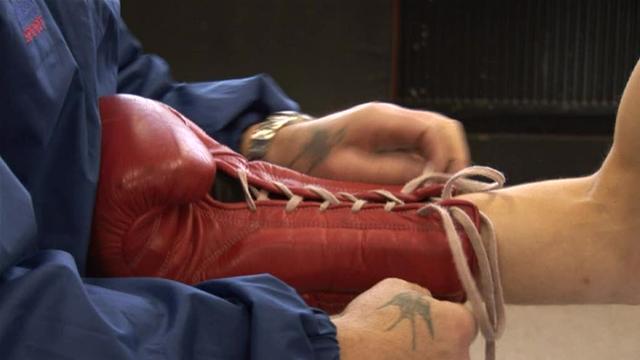 Only 48 hours after the single worst day for DFW smog since 2013, coal plant operator Luminant reportedly began a lobbying campaign to scuttle Sandy Greyson's Dallas city council clean air resolution requesting a better anti-smog plan.
Only 48 hours after the single worst day for DFW smog since 2013, coal plant operator Luminant reportedly began a lobbying campaign to scuttle Sandy Greyson's Dallas city council clean air resolution requesting a better anti-smog plan.
As a result, Item #12 “A resolution authorizing the City of Dallas to communicate its positions and requests regarding the Texas Commission on Environmental Quality's (TCEQ's) proposed State Implementation Plan for the Dallas-Fort Worth Region ozone pollution to the State of Texas, the TCEQ, and other agencies” is expected to be pulled from Wednesday’s unanimous voice-vote “consent agenda” and placed in line with other items generating discussion and dissent. It may be a long day – and that's exactly what the resolution opponents want in order to wear us down.
Luminant was said to be contacting city council members over the weekend, reportedly with the assistance of representatives of the Dallas Chamber of Commerce. In the past the company has stated it objects to the costs of installing the kind of modern anti-smog controls, referenced by the city’s resolution, at its three aging East Texas coal plants, despite their large smog-causing emissions. We don't know how successful the company's lobbying has been, or how much trouble the resolution is in.
If you're mad about this news, good. Here's what we need you to do:
1. If you haven't already, please follow this link and send a "click and send" ready-to-go email to all 15 Dallas city council members urging them to vote for the clean air resolution. You can add your own language at the bottom if you want.
2. Please sign up to speak in favor of clean air and the resolution on Wednesday
You must call the City Secretary''s office at 214-670-3738 to reserve a 3 minute speaking slot. Make sure you sign up for Item #12 on the consent agenda. If you don't sign-up in advance, you won't get to speak up on Wednesday!
We need to be there beginning at 9am, but we don't know how soon the resolution will come up in the agenda now. We know this makes it inconvenient. Again – not by accident. We've outlasted them before. We need to do it again.
3. Emphasize these Talking Points in your emails and speaking on Wednesday
-
All the air pollution control measures referenced in the city's clean air resolution are currently available, off-the-shelf technology, already in use in the world, US, and even Texas. Nothing exotic. Nothing experimental. There are coal plants and cement kilns with catalytic converters. There are already electric compressors. The resolution says only that the state should consider applying these technologies uniformly – to ALL major industrial sources affecting DFW air quality.
-
All the air pollution measures referenced in the city's clean air resolution are among the most cost-effective that can be taken, costing a small fraction of other measures already adopted. Putting controls on the coal plans and kilns costs $2-3,000 per ton of smog-forming pollution removed vs state programs spending $10-13,000 per ton. It's cheaper to prevent pollution at a dozen or so smokestacks than millions of tailipipes.
-
Most smaller Dallas businesses are already heavily-regulated for emissions because they're located within the DFW "non-attainment area," for smog, while the East Texas coal plants creating a huge chunk of that smog continue to be exempt from the same kind of regulations because they're located 90-100 miles outside the non-attainment area. They have more impact, but less regulation. That's not fair to Dallas-based businesses, or DFW''s seven million residents. We need small business owners to say the Chamber and Luminant doesn't speak for all of the Dallas business community.
-
The costs of installing new controls are small compared to the economic and public health costs of not installing them. Dr. Robert Haley's recent study for the Dallas County Medical Society concluded a drop of just 5 ppb in North Texas smog levels could save $650,000,000 in lost economic growth, and prevent hundreds of ER admissions, and 100 premature deaths – EVERY YEAR.
-
Luminant is taking the position that their three old coal plants are more important than the health of 1.2 million Dallas residents, and the other 5.5 million DFW citizens who breathe dirty air. The company is asking the Dallas City Council to place its interests above everyone else's.
-
DFW has been in continual violation of the Clean Air Act for smog since 1991. Our childhood asthma rates are higher than the state OR national average. EPA has already said the current plan doesn't do enough to lower smog levels to meet the federal standard. But opponents of the resolution have no alternative. They want the City of Dallas to sit on its hands and do nothing about 25 years of chronic smog – no matter how many people are affected by bad air. Does the City of Dallas really want to send the message that it doesn't care about clean air only a week before it hosts its own "Clean AIr Action Day" event at City Hall Plaza next Friday?
Some critics of these resolutions have argued they're only symbolic requests for cleaner air, and don't mean that much, or carry that much weight. If Luminant's reported response is any indication, it thinks this resolution is a threat to plans to sell-off those aging coal plants as part of its parent company's bankruptcy. We must be doing something right to engender this kind of alleged opposition from North Texas' King of Coal.
DON'T LET BIG COAL WIN THIS FIGHT
SPEAK UP IN SUPPORT OF CLEAN AIR – Call the City Secretary and Register to speak on Wednesday
THIS WEDNESDAY, JUNE 15th
9 AM DALLAS CITY HALL 1500 MARILLA
How to Outflank HB40 in the Barnett Shale
 Last week, the EPA made an important admission.
Last week, the EPA made an important admission.
"Methane emissions from the oil and gas industry are significantly higher than previous official estimates, according to draft revisions of the U.S. greenhouse gas emissions inventory released Monday by the Environmental Protection Agency. At 9.3 million metric tons, revised estimates of 2013 emissions are 27% percent higher than the previous tally. Over a 20-year timeframe, those emissions have the same climate impact as over 200 coal-fired power plants."
This most recent analysis jives with other studies like the one from UTA/EDF that found Barnett Shale facilities leaking up to 50% more methane than previously estimated. In reaction to the information, EPA Chief Administrator Gina McCarthy was quoted as saying "we need to do more" to cut methane pollution.
In its last year in office the Obama administration is finally grasping that natural gas isn't the climate change wunderkind its promoters claimed and last week's announcement is the tacit admission they need to do more to crack down on oil and gas.
What has that got to do with DFW in 2016?
By Spring, the Regional office of the EPA is expected to announce that it has rejected the State's clean air plan for DFW in regard to its application of "Reasonably Available Control Technology." That means the state hasn't required the application of readily-available air pollution controls for major sources the way the Clean Air Act demands. Specifically, EPA staff have cited the failure of the state to lower the emission standards for the Midlothian cement kilns to reflect more modern technology. But it's not the only area where Texas fell short. There are no new pollution requirements for any oil and gas facilities in the state's plan either.
EPA rejection of the Technology section of the state's DFW air plan would mean the EPA would begin to draft its own clean air plan for the region. An EPA-drafted plan gives local citizens concerned about the health impacts of fracking an opportunity to persuade the Agency to use the plan to crack down on smog-forming Nitrogen Oxide (NOx) and Volatile Organic Compounds (VOCs) pollution in the Barnett Shale by requiring lower emission standards on all aspects of drilling and production.
While methane isn't considered a smog pollutant, it doesn't get emitted by itself. It comes out of a stack or valve, or leaks from a pipeline combined with smog-forming VOCs. So the more you control VOC pollution, the more you control methane pollution.
In light of last week's announcement, this gives EPA an extra incentive to go after VOC emissions in DFW even though the conventional wisdom is that it's combustion-generated Nitrogen Oxide pollution that really makes DFW smog so bad.
BTW, that conventional wisdom is under attack because the worst-performing air monitoring sites in North Texas are all in the Barnett Shale and heavily influenced by pollution from oil and gas facilities – both NOX and VOCs. It's possible to imagine a strategy to get smog numbers down in DFW solely by application of oil and gas emission regulations that can impact these important monitors – which drive the entire region's fate – even if the new regs have minimal impact on monitors elsewhere.
What kind of new regulations are we talking about?
* Start with the electrification of all 650 large natural gas compressors in the 10-county area.
* Do the same thing for all drilling rigs in the same 10-county area – nothing but electric.
* Emission standards for tanks and pipelines that reflect the latest leak-detection technology.
Inclusion of new EPA “Control Technique Guidelines" which are part of Agency's new methane rules. According to the Agency's release on the the new rules, “…reduction of VOC emissions will be very beneficial in areas where ozone levels approach or exceed the National Ambient Air Quality Standards for ozone."
Under the new rules, areas like DFW that host large concentrations of gas pollution sources and are officially categorized as “non-attainment” for smog receive "an analysis of the available, cost-effective technologies for controlling VOC emissions from covered oil and gas sources."
There's one more reason EPA has an incentive to go looking for all the cuts in oil and gas pollution it can find in the 10-county DFW non-attainment area: after the cement kilns, there's no other major sources the Agency can target locally.
Because while it has the authority in a federal clean air plan to regulate all pollution sources in that 10-county DFW non-Attainment area, the EPA can't write new emission standards for the East Texas coal plants located 100 miles outside of that 10-county area – even though those coal plants have more of an impact on North Texas smog than any other source of pollution. EPA (and us) can put pressure on the state to address these dinosaurs, but it can't touch them through a DFW air plan.
EPA staff has estimated it will take a cut of 100-200 TONS PER DAY in local smog-forming Nitrogen Oxide pollution for DFW reach the current 75 parts per billion smog standard. The State's "plan" – i.e. the federal gasoline fuel changes it relies on – only represents a 20-40 tons per day cut.
Where do the other 60 -160 tons a day in cuts come from?
To give you some idea of the size of that gap, the state estimates that all on and off road vehicles in the 10-county area will emit 161 tons per day of NOx in 2018.
State-of-the-art controls on all the cement plants might give you up to 15 tons a day. Electrification of the large compressors, another 15-16 tons per day eventually. After that it gets hard to find large volumes of cuts without the coal plants. And this is why the EPA should give cuts in VOC/methane a longer look than they have before – they're concentrated in the same areas where the region's worst-performing monitors are and they represent a huge source of climate change pollution that could also be another skin on the wall in addition to lowering smog levels.
There's no question the passage of HB40 has stymied grassroots progress toward more protective regulation of fracking by municipal governments in the Barnett Shale. It's thrown what was a fairly successful local movement into disarray. To date, there doesn't appear to be any consensus about strategies to combat the effects of the legislation.
But a way to outflank some of the impacts of HB 40 coming is coming down the pike, and it offers local fracktivists an opportunity to rally round a common, achievable goal – lowering emission levels across the board in the Barnett Shale. We can overlay a larger, stricter regional template for oil and gas regulation in place of 100 separate municipal ones.
What better way to nullify the efforts of the nullifiers in Austin?
New Comments from EPA on DFW Air Plan: It Won’t Work
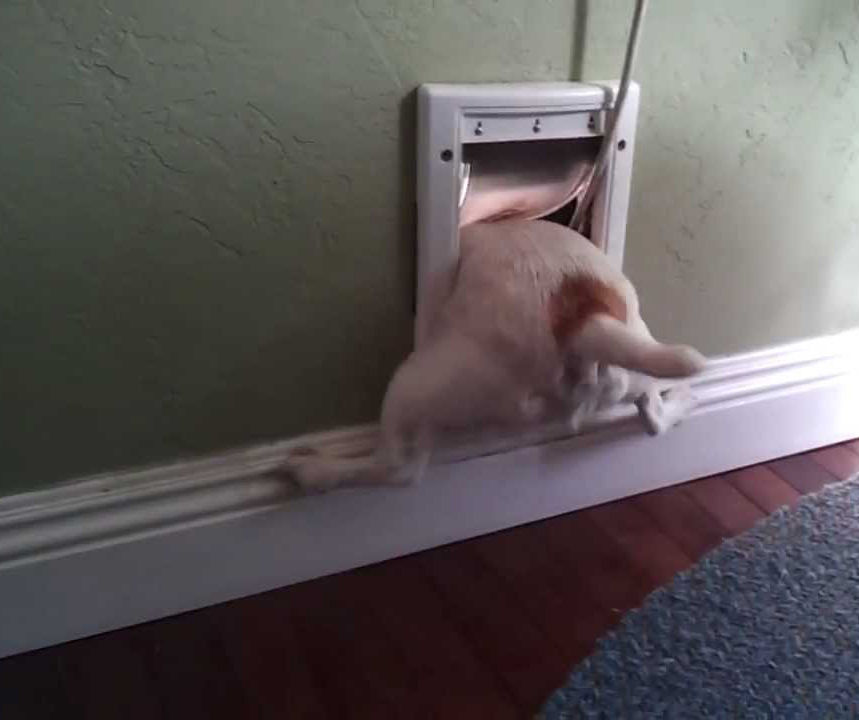 This plan won't work.
This plan won't work.
That's the simple message from the three pages of new comments Region 6 EPA staff submitted to the Texas Commission on Environmental Quality last month concerning its anti-smog plan for DFW.
That message begins with the cover letter, written by Mary Stanton, Chief of the State Implementation Plan Section for Region 6. "… additional local and regional ozone precursor emission reductions will be necessary to reach attainment by 2017."
How much in reductions? EPA estimates an additional 100-200 tons per day more in cuts of smog-forming pollution will be necessary to achieve compliance with the current 75 parts per billion ozone standard. "Without emission reductions on this scale, it is unlikely that the area will attain by the attainment date.”
To give you some idea of how large a number that is, TCEQ calculates that all gas and oil air pollution in DFW equals 78 tons per day, the Midlothian cement plants belch out over 18 tons per day, and all the power plants in the immediate DFW area, 21 tons per day. Totaled, those three sources add up to 117 tons of pollution a year.
All the cars and trucks on DFW roads are said to add up to 180 tons per day of pollution.
So the decrease in pollution EPA is saying is necessary to get down to the current ozone standard is huge.
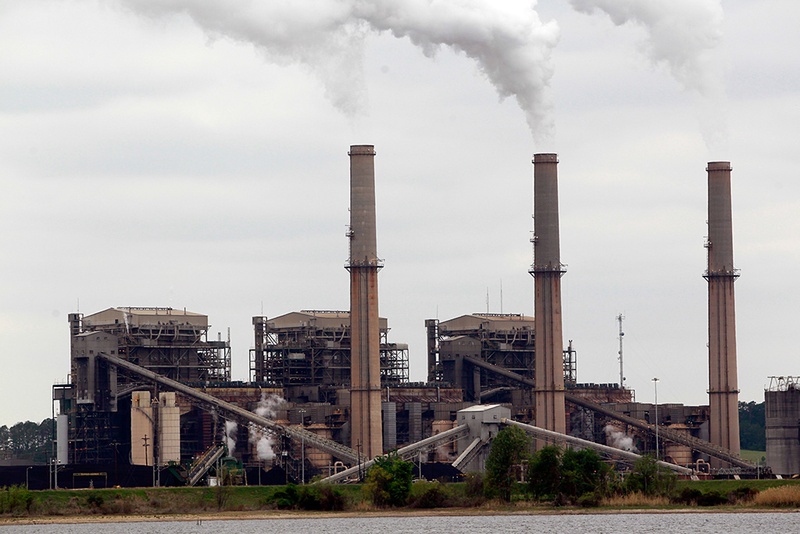
But take a look at those obsolete East Texas coal plants outside the boundaries the DFW nonattainment area. TCEQ says they account for a total of 146 tons per day. Add Selective Catalytic Reduction (SCR) which can get you up to 90% reductions in coal plant emissions, or close them down completely, add decreases from new controls on the cement kilns and oil and gas sources, and you're well on your way to amassing 200 tons a day of cuts in pollution.
Which do you think is more attractive to most DFW residents: permanently parking their cars, or putting new controls on the coal plants? Even though the coal plants harm the whole DFW airshed more than any other major source, they're not held accountable to the same regulatory requirements as sources closer to the center of the urban core, but which have less impact. Our cars must have special gasoline formulas in summer, we have to have HOV lanes, and we still go through Ozone Action Days, but the coal plants party like it's 1979. TCEQ is taking a hands-off approach to the plants and as a result the DFW region will continue to be in violation of the smog standard or huge cuts from other sources will be necessary.
TCEQ could have added new controls to the coal plants to the plan, but it chose not to. In fact, there are no new controls in the state's plan on any major sources of air pollution affecting DFW. EPA's new comments go to the heart of that choice. "Without additional emission reduction measures, we don’t see how the area will meet the standard of 75 ppb by the end of the 2017 ozone season," writes EPA staff.
EPA goes on to say TCEQ's computer modeling supporting it's do-nothing plan is "unrealistic," severely underestimating future smog levels, and delivering projections of decreases "that seem unlikely to be reached."
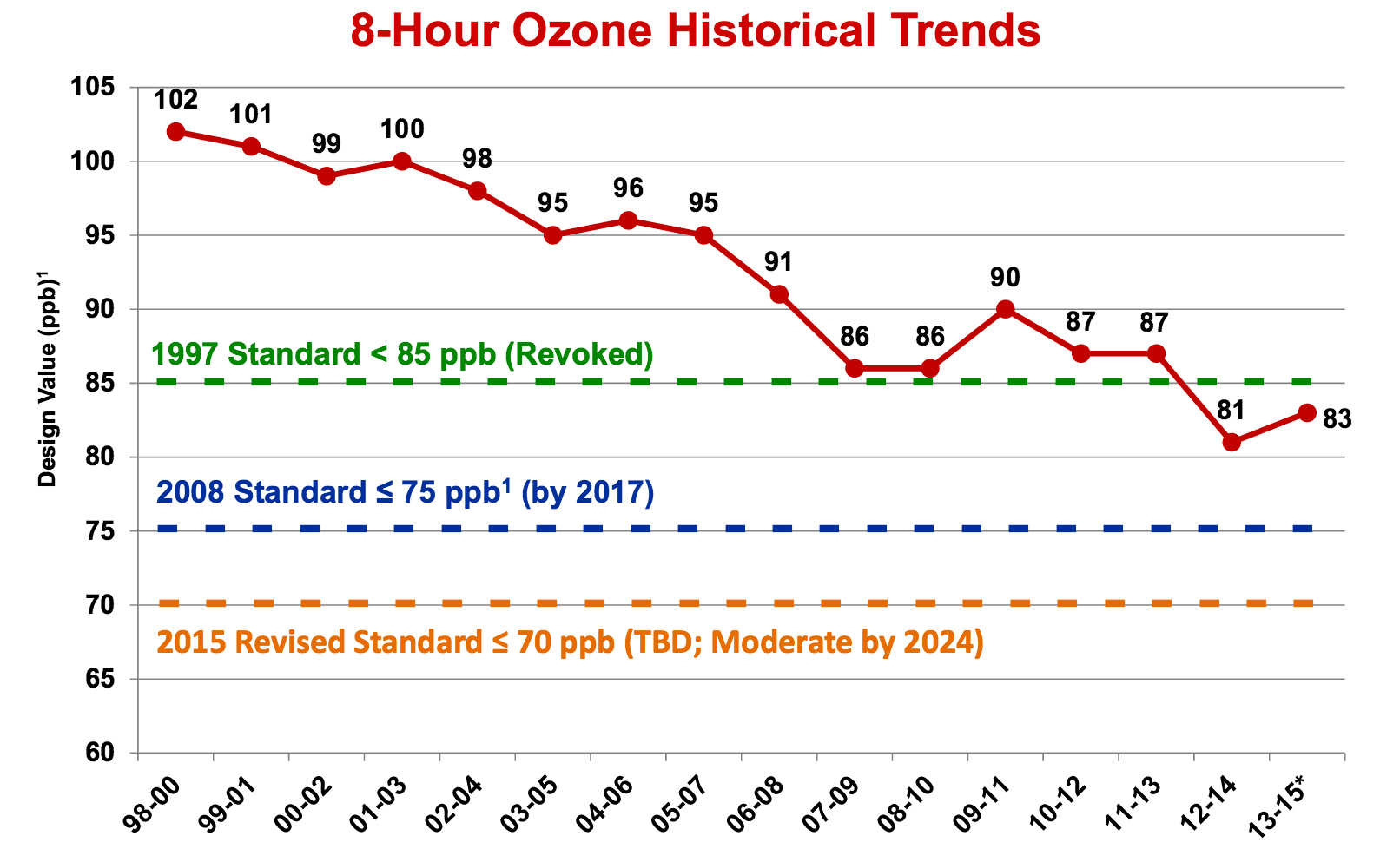 With this stance, EPA seems poised to reject this "attainment demonstration" part of the air plan as being insufficient. But it must wait to see how TCEQ responds to EPA comments about its modeling shortcomings and need for new cuts when the state officially submits its plan this July. Then, and ony then can the Agency approve or disapprove. We're going out on a limb here and predicting TCEQ won't change a thing, thus inviting EPA disapproval.
With this stance, EPA seems poised to reject this "attainment demonstration" part of the air plan as being insufficient. But it must wait to see how TCEQ responds to EPA comments about its modeling shortcomings and need for new cuts when the state officially submits its plan this July. Then, and ony then can the Agency approve or disapprove. We're going out on a limb here and predicting TCEQ won't change a thing, thus inviting EPA disapproval.
That's the pattern TCEQ has already established with its "screw you" response to the EPA's comments about the part of the plan dealing with "Reasonably Available Control Technology," or RACT, last February. This second part decides what new controls should be required of major sources of air pollution within the 10-County DFW "non-attainment" area – like the Midlothian cement plants and the thousands of oil and gas facilities checkerboarding the western half of the Metromess.
TCEQ says nothing new is required. EPA disagrees. EPA told TCEQ last year it had to do a new RACT review and lower the kiln's emission limits to account for a new generation of technology or it would have to reject the state's plan. TCEQ ignored the request, daring the EPA to disapprove. EPA seems more than willing to take them up on the offer.
And so while you're waiting for the state's computer modeling and suspect math to be rejected by EPA in July, you can probably expect to see EPA officially rejecting the RACT part of the state's plan sooner – maybe as soon as the next 60-90 days.
Despite the TCEQ going out of its way to submit an unacceptable plan to EPA, if the Agency pulls the trigger and begins a federal takeover of the DFW air plan, the Commission and the whole of Texas State Government will cry bloody murder about the usurpation of the state's authority and once again proclaim how "out of control" the EPA is on their way to filing suit.
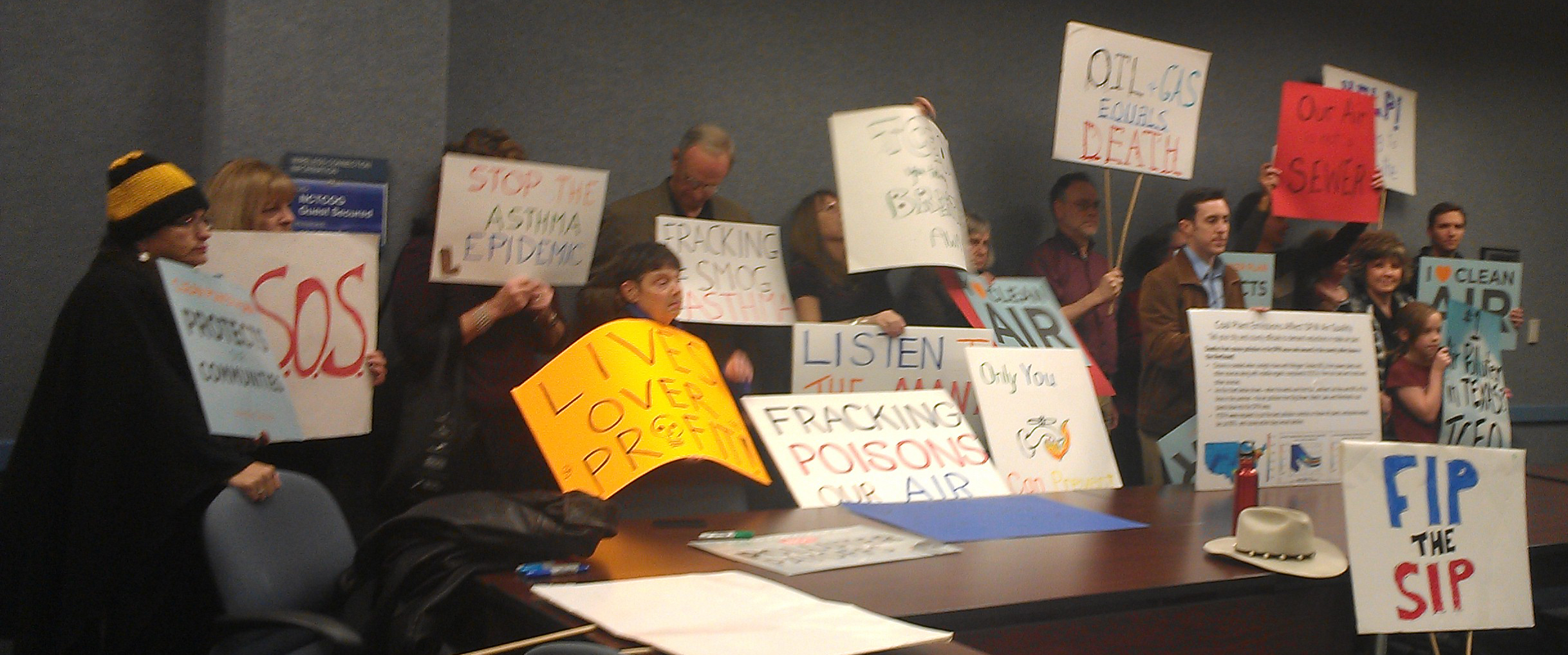 This is why the rowdy eruption of public sentiment for an EPA plan at the hearing in Arlington two weeks ago was so critical (Thank you again). It's also why we now have to be about the business of getting DFW local governments, hospitals and school districts to pass resolutions in favor of an EPA takeover. The Agency will need this kind of public support to counter all the criticism it will take from the Usual Suspects in Austin and DC. If you're interested in helping us pass one of these resolutions in your county, city, school or hospital district, please let us know at: downwindersatrisk@gmail.com
This is why the rowdy eruption of public sentiment for an EPA plan at the hearing in Arlington two weeks ago was so critical (Thank you again). It's also why we now have to be about the business of getting DFW local governments, hospitals and school districts to pass resolutions in favor of an EPA takeover. The Agency will need this kind of public support to counter all the criticism it will take from the Usual Suspects in Austin and DC. If you're interested in helping us pass one of these resolutions in your county, city, school or hospital district, please let us know at: downwindersatrisk@gmail.com
And as always, it's why you, and people you know should:
Thank You…for Kicking Serious State of Texas Butt Last Night
 Those were not your father's treehuggers that showed up in Arlington last night.
Those were not your father's treehuggers that showed up in Arlington last night.
Over 100 people, including 36 speakers over three hours, provided perhaps the angriest, and certainly the most profanity-laced evening of testimony ever heard in the two-decade history of state public hearings on DFW's dirty air. It's as if frustration over the last 20 years of State failures had finally found a cathartic, public release.
For the most part, speakers from communities across North Texas ignored the State and spoke directly to representatives of EPA, pleading for the Agency to take air quality planning out of the hands of a hostile Texas Commission on Environmental Quality.
But when many speakers did address the State's efforts, they didn't parse any words – at least any words that can be printed in a family newspaper, or this blog. For the first time anyone can recall, f-bombs were hurled at TCEQ over its failure to take North Texas bad air seriously. Dallasite Gary Stuard set the tone for the event early on by saying it was time for residents "to quit being so polite" about their systematic poisoning. His message was taken to heart by many of the speakers that followed.
Old, young, male, female, Black, White, Latino, mainstream group, neighborhood group, Elected officials, students, business owners, doctors, asthma suffers, parents of asthma suffers, people concerned about climate change, about fracking, about coal plant pollution, about cement kilns – it didn't matter. Not a single speaker spoke in favor of the State's plan of doing nothing about rising smog levels.
Seizing on the day's headlines, Lance Irwin from Mansfield was the first, but not last person to compare the official neglect over lead in Flint, Michigan's water supply to pollution in DFW's air supply. Arlington residents spoke – and in one instance, sung – movingly about fracking contamination making their neighborhoods unlivable. More than one testimony was dedicated to a friend or relative who'd died from a lung disease. Equal parts despair and anger.
By the time the final speakers finished, it felt more like a church revival. The Church of the Unredeemed State Agency. When was the last time you heard people say they had "fun" at a pro forma public hearing?
To be sure, more traditional voices and statements were in full force. Congresswoman Eddie Bernice Johnson sent a staff member urging the State to redo its plan. Dallas County Commissioner Theresa Daniel sent her aide to talk about the need to control coal plant pollution in the plan. Dallas City Councilwoman Sandy Greyson spoke for the need to grab this opportunity to make progress. Dr. Robert Haley of the Dallas County Medical Society and UT-SW did an excellent job of summarizing his recent study on the public health and economic costs of DFW smog and speaking to the Texas Medical Society resolution against the state plan. Rita Vinson, newly elected President of the Fort Worth League of Neighborhood Associations read a unanimous resolution passed by her group only the day before, calling for EPA to reject the plan. Lots of speakers recounted the long and winding road leading up to the current fact that DFW now has worse smog than Houston.
But it was the tossing aside of business meeting protocol and the pretense that the State had any interest in being there that made this a milestone event. Veterans of past hearings talked about how tired they were of repeating themselves. Newcomers couldn't understand how a State government that doesn't think smog is bad for you can write an effective anti-smog plan. Dentonites were rightfully resentful of seeing a plan that does nothing about smog from oil and gas sources being promoted by the same government that stole its municipal rights to regulate it themselves. Coarseness in language reflected rawness of feelings over yet another Texas attempt to undermine the EPA.
Although the weather was nasty, the major obstacle organizers faced yesterday was understandable skepticism about what good it would do to go to another useless TCEQ hearing. The answer was the need to provide EPA with political support to prepare for a federal takeover. That happened. Big Time. For three solid hours.
Thank you to everyone who participated in the worst public ass-kicking the TCEQ has ever received in DFW.

Now what?
EPA sent three staff members, including those in charge of reviewing and commenting on the State plan. They took notes. We'll get to see what the Agency thinks about this "new" plan within the next three weeks after the comment period closes and its written review becomes part of the public record.
After that, it should be a relatively short time before EPA decides to officially reject the part of the plan dealing with new controls in the 10-County "non-attainment area" – the part the State didn't do even after EPA asked TCEQ to, and explicitly told the Commission it would reject the plan unless it did.
It will take EPA longer, perhaps until the end of the year, to make a decision about the rest of the plan – the part that relies on computer modeling and estimates of future pollution. It's more technically oriented and there's more nuance than the up or down legal opinion with the control section.
And for citizens?
Send an email to EPA urging them to reject the State's awful air plan for DFW
Sign the CHANGE.ORG petition urging EPA to reject the State's plan
Forward our two-and-a-half minute video to people you know are concerned about air quality – or should be.
Submit written comments on this plan to the TCEQ:
Please reference: "Dallas-Fort Worth Attainment Demonstration for the 2008 Eight-Hour Ozone Nonattainment Area, Project Number 2015-014-SIP-NR"
via the interwebs:
http://www1.tceq.texas.gov/rules/ecomments
or fax
(512) 239-6188
Or by snail mail:
Kathy Singleton,
MC 206,
Air Quality Division, TCEQ
P.O. Box 13087
Austin, Texas 78711-3087
And get ready to campaign for resolutions supporting an EPA clean air plan for DFW from your local city council, county government, hospital districts, and school boards. We're all about building support for a federal takeover of our air quality planning between now and the end of the year when EPA is expected to make its final decision. We're coming to a governmental entity near you!
Lots is at stake. We can win the largest improvement in DFW air quality in a decade or wait another five years to try. Thursday night's showing makes clear many of us aren't willing to wait.
Onward Thru the Smog.
It’s a Texas vs EPA Cage Match. Winner Takes All …The Air You Breathe
 JOIN OUR TAG TEAM EFFORT TO TAKE DOWN THE STATE OF TEXAS
JOIN OUR TAG TEAM EFFORT TO TAKE DOWN THE STATE OF TEXAS
BUT WATCH OUT – THEY PLAY DIRTY
NEXT THURSDAY EVENING
JANUARY 21st
6:30 PM
616 Six Flags Road
First Floor HQ of the
North Central Texas Council of Governments
There's an important bureaucratic cage match between EPA and the State over how clean your air should be.
The state says just by hitching a ride on already-in-progress federal gasoline mix for cars and trucks, DFW ozone, or smog, will drop to levels "close enough" to the current federal smog standard of 75 parts per billion (approximately 78 ppb) . No new cuts in pollution required.
The EPA says not so fast – "close enough" may not be good enough this time around and you're not following the Clean Air Act in laying back and requiring no new cuts in pollution.
EPA has told Austin a failure to follow Clean Air Act rules will force it to take responsibility for the plan away from the State.
Is this something you want? If so, you should show up and next Thursday evening to give the EPA the political support it needs to pull the rug out from under the State.
WHAT HAS THE EPA ALREADY SAID ABOUT THE STATE'S PLAN?
Along with comments from DFW residents, environmental groups, doctors, industry and elected officials, EPA itself will weigh-in with written comments on the TCEQ plan by the deadline of January 29th.
But we don't have to wait that long to find out what EPA really thinks about what the State is proposing. Last year, EPA provided 11 pages of comments on exactly the same plan.
1) This plan won't work without more cuts in pollution
What EPA Said:
"Based on the monitoring data and lack of additional large reductions in NOx within areas of Texas that impact DFW, it is difficult to see how the area would reach attainment in 2018 based solely on federal measures reductions from mobile and non-road….The recent court decision that indicates the attainment year will likely be 2017 for moderate classification areas such as DFW, makes it less clear that the area will attain the standard by 2017 without additional reductions."
What EPA Meant:
It wasn't looking good when the deadline for reaching the 75 ppb standard was 2018 and the State didn't require any new cuts in air pollution, but now that the deadline is 2017, your do-nothing "close enough" plan is even less likely to work.
2) Your case for doing nothing isn't very good
What EPA Said:
"While the State has provided a large chapter on Weight of Evidence, the principal evidence is the recent monitor data. The monitor data does not show the large drops in local ozone levels and therefore raises a fundamental question whether the photochemical modeling is working as an accurate tool for assessing attainment in 2018 for DFW."
What EPA Meant:
Actual measurements of smog in DFW seem to undercut your claim that the air is getting cleaner faster. Maybe your computer model that's driving the entire plan isn't all that great. (And this was before smog levels went UP after the summer of 2015 – something not predicted by the State's model….)
3) Review pollution limits for the Midlothian cement kilns, or we'll reject your plan
What EPA Said:
"Because of significant changes in the type and number of cement kilns in Ellis County,…TCEQ's rules need to be reevaluated to insure these reductions are maintained, and the emission limits reflect a Reasonably Available Control Technology (RACT) level of control as required by the Clean Air Act…Failure to conduct a thorough RACT analysis for cement kilns which would include appropriate emission limits would prevent us from approving the RACT portion of the attainment plan submittal."
What EPA Meant:
Update your kiln pollution limits, or this part of the plan is toast. (Texas chose not to perform this update, in essence, giving EPA the bureaucratic finger.)
4) Oil and Gas pollution seems to be keeping the region's smog levels higher than they should be
What EPA Said:
"Recent NOx trends (Figure 5-10 in TCEQ's Proposal) indicate a fairly flat NOx trend for several NO monitors in the western area of the DFW area (Eagle Mtn. Lake, Denton, and Parker County monitors). These monitors are in areas more impacted by the growth in NOx sources for Oil and Gas Development that seem to be countering the normal reduction in NOx levels seen at other monitors due to fleet turnover reductions (on-road and Nonroad). These higher NOx levels in the modeling domain that seem to be fairly flat with no change since 2009
raise concern that the area is not seeing the NOx reductions needed to bring the ozone levels down at these monitors."
What EPA Meant:
Since the historically worst-performing air pollution monitors in DFW are located in exactly the same area as a lot of gas and oil activity, and these monitors haven't been seeing the expected decrease in smog you predict, maybe you ought to think about cutting pollution from those oil and gas sources. Like we said, this plan needs more cuts in pollution.
5) Your own evidence supports cuts in pollution from the East Texas Coal Plants
What EPA Said:
"The TCEQ provided an evaluation of emissions from all of the utility electric generators in east and central Texas. However, the discussion in Appendix D on the formation, background levels, and transport of ozone strongly supports the implementation of controls on NOx sources located to the east and southeast of the DFW nonattainment area. How would a reduction in NOx emissions from utility electric generators in just the counties closest to the eastern and southern boundaries of the DFW area impact the DFW area?"
What EPA Meant:
Despite your protests, the State's own analysis shows cuts in pollution from the East Texas Coal Plants have a big impact on DFW smog levels and supports the argument for putting new controls on them. Did you actually run your fancy-dancy computer model to see what would happen if you did that? (No, the State did not. But UNT and Downwinders did.)
WHY WOULD AN EPA PLAN FOR DFW AIR MAKE ANY DIFFERENCE?

If the EPA rejects the State's plan, the clock begins ticking: the State is warned it has to write a new plan and, meanwhile, EPA begins to write its own. If the State doesn't turn in a plan the EPA finds acceptable in 24 months, the EPA plan is implemented instead.
The State has no interest in any new cuts of pollution from any sources. It thinks it's plan is already "close enough."
If the EPA is writing the plan, citizens can use the new UNT study to show the Agency which cuts get the largest drops in smog – using the State's own air model.
We can use Dr.Haley's study to show the approximate economic and public health benefits of those cuts.
More change happens if EPA is writing the plan.Enough to finally get DFW safe and legal air? We don't know until we try. The alternative is doing nothing.
“Help Us. We Live in Texas.”
(Dallas)— “Help Us: We Live in Texas.”
That’s the plea of a video released today by a local clean air group claiming the state has so intentionally sabotaged Dallas-Fort Worth anti-smog efforts that residents now need EPA to take over the job.
“Texas is as likely to enforce the Clean Air Act in 2015 as Mississippi was to enforce the Voting Rights Act in 1965,” said Downwinders at Risk’s Director Jim Schermbeck, echoing a line in the video.
The group posted the 2:42 minute piece, titled “SOS @EPA” in response to this morning's vote by the Texas Commission on Environmental Quality (TCEQ) to move forward with a new anti-smog plan for DFW that the Commission has already been told by EPA falls short of legal and regulatory requirements.
In the video, footage from a Downwinders’ street action calling for help at EPA Regional Headquarters in downtown Dallas November 5th is spliced with facts about DFW’s 20 years and counting chronic smog problem. Central to the group’s charge is the state’s unwillingness to put new controls on major sources of industrial air pollution like the Midlothian cement kilns, East Texas coal plants, and gas facilities – despite the fact their own air modeling shows those controls could bring smog down enough to comply with the Clean Air Act.
Today’s vote by the TCEQ is the second in 12 months concerning the same DFW air plan. Its goal is to get from an average of 83 parts per billion (ppb) of smog in 2015 down to the current federal standard of 75 ppb by 2017.
However, the state only estimates a best-case result of almost 78 ppb. Despite that shortfall, there are no new pollution controls required of any major sources. Over the last 20 years, the state has written five anti-smog plans for DFW. None has accomplished its goal on deadline, and regional smog levels actually rose this year.
Besides once again failing to hit is mark overall, the EPA has already told the State its formal assessment of modern pollution controls for those major sources needed revisiting to be legal. TCEQ refused to comply with EPA and today’s plan contains exactly the same assessment as the one EPA has already said isn’t sufficient, making that part of the plan instantly illegal. Although EPA gives state governments authorization to write smog plans for their own metropolitan areas, it still has final approval based on criteria listed in the Clean Air Act.
One of the points made in the group’s video is that studies by local hospitals have shown DFW childhood asthma rates to be as much as four times the state average and over twice the national average, making the need for cleaner air imperative.
“The health of seven million Dallas-Fort Worth residents is being held hostage by a state government hostile to the goal of clean air. Only federal intervention can save us,” said Schermbeck.
The video can be found at Downwinders at Risk’s website (downwindersatrisk.org), it’s Facebook page, twitter account (@cleaner air) and the group’s YouTube channel (Downwinders’ TV).
__________________________________
SEND EPA ADMINISTRATORS A MESSAGE TO REJECT THE STATE'S PLAN AND WRITE ONE OF ITS OWN:
https://www.downwindersatrisk.org/featured-citizen-action/
AND
SIGN THE CHANGE.ORG PETITION:
https://www.change.org/p/ron-curry-and-gina-mccarthy-environmental-protection-agency-reject-texas-smog-plan-for-dallas-ft-worth
________________________________________
LIKE THIS VIDEO? LIKE OUR WORK? THINK IT'S IMPORTANT?
THEN PLEASE MAKE A TAX-DEDUCTABLE CONTRIBUTION TO DOWNWINDERS BEFORE DECEMBER 31st.
DONATE HERE.
________________________________________
WHY?
It might be hard to believe, but despite being the nation’s fourth largest metropolitan area, AND being in constant violation of the Clean Air Act for smog since 1991, AND having higher annual smog numbers than Houston, AND being singled out by EPA as one of only a handful of areas expecting to STILL be in violation of the Clean Air Act in 2025, there’s still only one professional staff person devoted to cleaning up DFW air: the staff person you pay for when you contribute to Downwinders at Risk.
Besides community organizing on the ground, Downwinders also had to go out and build a new committee of local officials concerned about dirty air after the traditional regional air quality planning process broke down. That committee produced a first-ever study showing how new pollution controls on the kilns, coal plants, and compressors could bring smog levels down enough to comply with the Clean Air Act. Our study was used by the Dallas Commissioners Court to pass a resolution requesting new controls on the East Texas coal plants in October. Had it not been for our new committee, there would have been no local officials involved in the DFW air quality planning process at all, and noaccountability for a state government that isn’t interested in our lungs.
Want to get just basic information about DFW air pollution? There are no dedicated environmental beat reporters left in DFW. Downwinders fills this gap as well, providing the only source of reliable and timely information on DFW air quality issues.
Need technical or organizing training? We do that too. Many of you know we just sponsored our first conference – the four-day Root and Branch Revue, featuring a graduating class of 70 grassroots activists from our first “University of Change.”
When you give to Downwinders, you fund the last line of defense between your lungs and a state government that doesn’t believe smog is that bad for you.
And when you give to Downwinders, you know you’re giving to a group with a two decade proven track record of getting results.
That’s our pitch. We get your donation. You get our best effort at protecting your lungs.
On behalf of myself, and the Downwinders at Risk board, thank you for your consideration.

Jim Schermbeck
Director, Downwinders at Risk
Study: Combusted PM Pollution Up to Five Times as Lethal As Non-Combusted Kind. Burning is Bad.
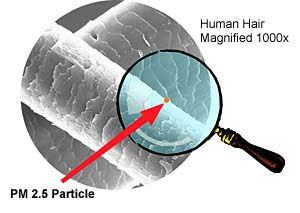 Long term exposure to small particulate pollution from combustion sources, specifically coal-fired power plants, is up to five time more likely to kill you through heart damage than other forms of natural or human-made "PM."
Long term exposure to small particulate pollution from combustion sources, specifically coal-fired power plants, is up to five time more likely to kill you through heart damage than other forms of natural or human-made "PM."
That's the conclusion of new comprehensive study comparing risks from breathing-in the tiniest specs of soot from combustion sources for over 450,000 Americans in 100 cities from 1984 to 2014. Published in the journal Environmental Health Perspectives this month to coincide with the Paris climate talks, the study has ten co-authors and promises to be a milestone in the long fight to reduce this form of pollution.
Combustion of any sort releases fine and ultra-fine particles of soot, or "Particulate Matter" in the often antiseptic regulatory-speak of environmental regulation. These specks differ from dust particles or fireplace soot in that they're much, much smaller and so can be inhaled deeper into the lungs, and then, even pass from the lungs into the blood steam to affect other organs and systems. It's their tiny size that makes PM pollution dangerous on its own. Over the last 30 years, scientists and public health officials have gone from being worried about PM 10 (10 microns or less), to PM 2.5 (2.5 microns or less – about 100th of the width of a human hair), to Ultra-fine Particles.
But soot from combustion also carries residues of whatever was being burned in the facility it came from, and this makes it doubly toxic. If you're burning coal, the soot might carry bits of Mercury, Arsenic, Cadmium and Lead, for example. The new study says that difference is what really drives up risk for people breathing-in coal plant PM.
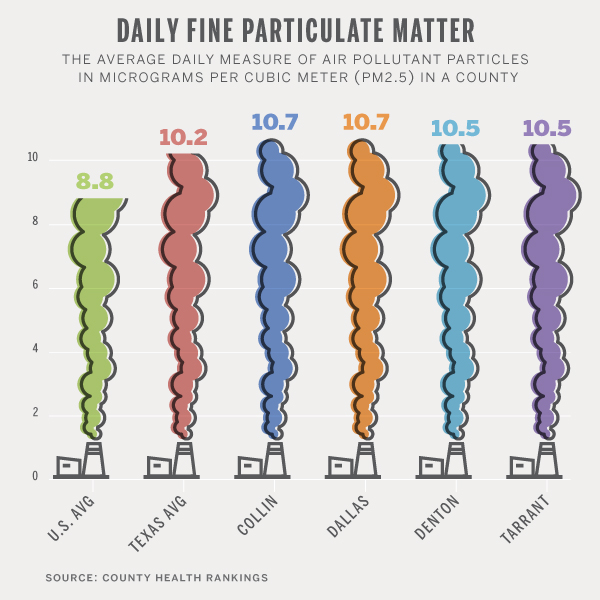
Locally, DFW is chock full of large industrial sources of combustible PM.
We're surrounded by five coal plants in an arc on its northeastern to southeastern side. That means we're downwind of their pollution, including their particulate matter pollution, most of the year. Their impact on local smog levels has recently been chronicled by Downwinders' study from UNT.
PM Pollution would follow approximately the same patterns although heavier particles fall closer to the source, while the really fine particles drift for hundreds or thousands of miles. Luminant’s 2013 Emissions Inventory submission reports 1400 tons of 2.5 particulate matter in a single year at its Big Brown plant. And that may be a severe underestimate. Big Brown’s two Units have exceeded the Texas SIP’s opacity limit of 30 percent on thousands of occasions over the past decade.
Luminant's Martin Creek plant released 2,018 pounds of mercury into the environment in 2013, according to the Toxic Release Inventory, and in fact Texas hosted the top three mercury polluters among all coal plants in the US that year.
Closer in, there's the three Midlothian cement plants with a total of four kilns now. Modernization and controls forced by 20 years of campaigning by Downwinders have brought the numbers down dramatically, but they're still huge facilities that deal in both a dusty raw material, and burning lots of coal and industrial wastes like tires and used oil, and even car parts, to turn that into a higher grade of raw material. When you burn exotic materials with coal, you turbocharge the toxicity of the PM pollution even more. In 2013, the last year the state has numbers posted online, the three cement plants released approximately 440 tons of 2.5 PM pollution.
But cement plants weren't included in the study and so the risk evaluations in it for DFW are underestimated.
Midlothian is also the home to the very large French-owned Amersteel (formally Chaparral Steel) secondary steel mill and steel mills were included as a source category in the study and were also associated with a higher mortality rate. Just about every 18-wheeler trailer you see on local highways loaded with crushed cars is headed to this facility – across the street from the TXI cement plant. Imagine the residues on the soot from melting down thousands of used cars into liquid metal. In 2013, the plant released 133 tons of PM 2.5.
But by far, the largest PM polluter in the DFW area, bar none is the Owens-Corning fibreglass plant in north Waxahahchie, along I-45. It released a whopping 300 tons of PM 2.5 pollution in 2013 alone. No other facility comes close – not the cement plants or the steel mill down 287. Not the GM plant in Arlington. It's not known how much of Owens-Corning PM is combusted however. It could be from the manufactiuring process.
Diesel engines in vehicles were also included, and the study found they has an association with higher mortality, but not nearly as significant as coal plants or steel mills. There's been a steady stream of studies tying highway pollution to respiratory and neurological illness among near-by populations, especially children. Most of the risk is assigned to PM pollution, and most of that is coming from diesels.
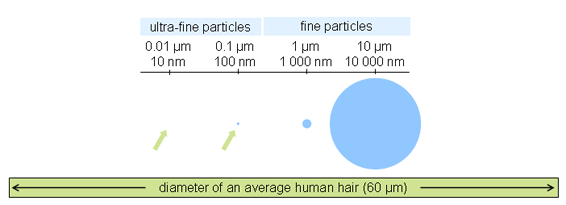
Just as important as the conclusion that coal-combusted particulate matter is significantly more dangerous than your average speck of dust is the study's indictment of current EPA risk assessments that operate on exactly the opposite assumption. The authors are critical that the Agency still weighs the risk of desert dust the same as combusted soot in computing long-term human health effects.
There are potentially enormous public heath and policy implications for North Texans in the study's conclusions.
First, the campaign to get the most modern anti-smog controls included in the latest DFW air plan has the side benefit of reducing PM pollution too. Selective Catalytic Reduction (SCR) on the cement kilns and coal plants decreases smog-forming pollution by up to 90%, and makes an effective additional PM catcher as well, increasing soot capture by 30-50%. The technology is particularly effective on the kind of PM that carries dangerous heavy metals like Mercury. Of course, retiring already-obsolete coal plants would eliminate the threat all together.
Likewise, electrification of compressors would not only lead to decreases in smog-forming emissions, but PM pollution from those sources as well.
Next, it means the already large public health costs of bad air in DFW just published by Dr. Robert Haley of UTSW in his own study are severely underestimated, since they were based on the EPA's own risk assessment software that doesn't weigh the harm of coal power plant PM differently from any other speck of PM 2.5. Adjust those numbers for the exposure to toxic soot and you could see a huge increase in lives lost, illness caused, and dollars spent.
Finally there are implications for almost very other source of combustion around – burning is bad. Where's there's a flame, a boiler, a furnace, a process that means burning something to get something in return, there's going to be PM pollution. What you burn is as important as how you burn it. Burn coal and get the residues of coal on the PM. Burn hazardous waste, and you get the residues from those wastes on the PM. Burn diesel fuel in your truck or car and get residues from that fuel mix packed away in your particulate matter.
As one of the major authors of the study said, if you want to do something about this kind of pollution – start with the most toxic forms of combusted PM. Those mostly come from large industrial sources – the coal plants, cement kilns, and compressors already in our sights because they're also smog polluters. We knew they were a problem. Now we know even more about why they're a bigger problem.

